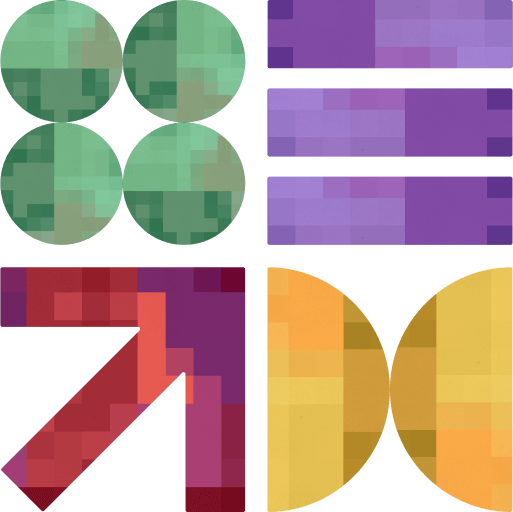ChatGPT and Other Artificial Intelligence Examples Are Making Headlines

As 2022 comes to an end, several artificial intelligence examples are making a strong debut. From ChatGPT to Dream by WOMBO, the once-exclusive technology is easily available for users of all ages. And it’s delivering a range of functionalities that truly show we’ve come a long way in AI.
Understanding Artificial Intelligence
Before exploring the numerous artificial intelligence examples dominating headlines, let’s quickly recap what it is to best appreciate this technology.
In the simplest of terms, artificial intelligence is one of the in-demand Industry 4.0 technologies. It’s the science and engineering of making intelligent machines, i.e., systems that can act and think like humans.
This field combines computer science and datasets to support problem-solving. It also branches into machine learning and deep learning, two sub-fields that seek to create system that make predictions or classifications based on data.
What Is Artificial Intelligence?
While artificial intelligence examples and apps are more popular now, the technology’s birth dates all the way to the 1950s.
Alan Turing, or the father of computer science, was the first to raise the question – “Can machines think?” According to Turing, machines can process symbols to simulate reasoning.
However, it wasn’t until 1956 that research on AI truly started. In fact, that’s when the term “artificial intelligence” was coined by John McCarthy.
By the mid-1960s, the Department of Defense began investing heavily in AI and its research. With the funding, researchers predicted that it would take 20 years for machines to be doing any work a man can do.
Unfortunately, other projects and criticism affected this prediction and delayed AI from unleashing its true power. It wasn’t until the 1980s that work on AI regained momentum. And, by 2000, AI solutions became widely used.
The years 2015–2019 were a golden age for this technology as research on it increased. Especially as more industry leaders such as Google were incorporating it in some offerings or processes.
Artificial Intelligence in 2022 and Beyond
So far, the year 2022 has been a great year for AI. Several innovations can be seen in the artificial intelligence examples released in the past 12 months, including:
- Natural Language Generation – A subset of AI, natural language helps content developers convert data into native language. For instance, data can be visualized as charts or graphs.
- Speech Recognition – Speech recognition isn’t new, but it has become more widely used in 2022. It converts human speech into a format that computers can understand and process.
- Virtual Agents – Virtual Agents such as Google Assistant are becoming valuable for everyday tasks. For instance, they can answer common queries customers have as chatbots.
- Decision Management – Used in the financial, healthcare, trading, and insurance sectors, this technology converts data into predictive models. That way, businesses can speed up decision making while avoiding risks.
- Robotic Process Automation – RPA entails the use of robots to interpret, communicate, and analyze data. As a result, manual, repetitive operations are automated partially or fully.
As for the future, you can expect the rise of the following in the upcoming few years:
- Deep Learning – A sub-field of machine learning, it imitates the way individuals gain knowledge. In fact, its artificial neural networks are modeled to work like the human brain.
- Hyperautomation – Hyperautomation entails combining AI with machine learning and RPA to automate business processes such as workflows and production chains.
- Generative AI – This trend uses existing data in any form to generate new content. One of the most prominent generative artificial intelligence examples is AI art generators. We’ll get to these in a bit.
The Best Artificial Intelligence Examples You Can Experiment With
Now, let’s get to the most interesting part (and what you initially came here to learn about) – artificial intelligence examples and apps.
ChatGPT
ChatGPT (Chat Generative Pre-trained Transformer) is a chatbot that was released by OpenAI in November 2022. It quickly became the talk of social media due to its detailed responses, articulate answers, and ability to generate written pieces like essays.
While its responses don’t always make sense, ChatGPT produces text in a way that’s more advanced and creative than most chatbots. In fact, many tech leaders believe it has surpassed the digital assistants of tech giants like Facebook and Microsoft.
ChatGPT is a variant of OpenAI’s GPT-3.5 language generation software. The new app is the result of training machines using enormous amounts of text data from the web, archived books, and Wikipedia.
And while it’s currently used to entertain the masses, it can be used for advanced purposes. For instance, one company is experimenting with ChatGPT to summarize changes to legal documents.
It may take time, however, for the chatbot to become suitable as an enterprise product. It’s not reliable enough as a decision-making tool as it may not get facts right. Moreover, some responses have uncovered a bias problem, driving developers to improve the product further.
Dream
Chosen as Google’s best app of 2022, Dream is an AI art generator. It may be the tool your friend used to create that AI generated profile picture they have on these days.
While you can add your image and select an art style, Dream can also generate unique artwork using prompts. Alternatively, you can pick from Dream’s suggestions Moreover, it allows NFT investors to connect their wallet and remix existing NFTs.
Dream uses CLIP, an open-source neural network that’s freely available thanks to OpenAI. And though it takes time to create images based on user input, the app claims to never produce the same artwork twice.
Despite some interesting results, Dream has pinpointed how language can be loaded with social connotations and cultural stereotypes. For instance, simply typing “her” produced traditional feminine imagery with stereotypical pink and white hues.
Still, Dream can be used for the creation of headers, posts, etc. Especially since WOMBO allows the commercial use of images that comply with its terms and conditions.
ELSA
ELSA (English Language Speech Assistant) is an AI-powered English speaking coach. Currently the online app to help current English pronunciation errors, it was developed using voice data of speakers with different accents. This makes it an effective tool for non-native speakers.
In addition to tracking learners’ progress, ELSA carries out immediate evaluation and provides detailed feedback on fluency. Moreover, the AI is self-evolving as it adjusts to users’ behavioral data and personalizes their daily curriculum.
Though it may seem like this AI app is suitable for schools, it’s actually useful for businesses as well. It helps them save the money otherwise spent on tutoring professionals to improve their fluency, intonation, etc. Employers can also measure employees’ progress from a dashboard and assign tests.
The Question Everyone Has in Mind: Will AI Replace Humans Soon?
With so many artificial intelligence examples around, it’s normal for fear to sneak its way to some people’s hearts. After all, it may feel like many jobs will easily replace people with different apps.
However, it’ll take ages before that can ever happen. That is, if at all. And here’s why –
- AI Lacks Emotional Intelligence – Humans are social animals and require an emotional connection. Artificial intelligence is yet to be able to achieve this regardless of how well they’re programmed to respond to humans.
- Data Needs to Be Inputted First – AI can’t function without data. It can even become useless if the data doesn’t include a new area of work or algorithm that factors unforeseen circumstances. Therefore, human reasoning and thinking power will still be important.
- Machines Don’t Have Soft Skills – AI doesn’t possess important soft skills like teamwork, critical thinking, and interpersonal skills. These are essential for individuals regardless of their position in a team.
- AI Doesn’t Compete with Humans, It Complements Them – There would be no AI without human intelligence. Moreover, the technology is designed to take on repetitive tasks that require less intense reasoning. Besides, while it may replace 85 million jobs in 2025, it’ll produce 97 million in the same year.
Thinking of Creating Your Own AI App?
If the numerous artificial intelligence examples out there inspired you, DPL can help you create your very own AI app. Our digital transformation consultants and expert developers can realize any ideas you have to benefit your business.
Get in touch with us via the form below and let us start working on your next million-dollar idea. Who knows? Maybe next year’s top artificial intelligence examples lists will include your app.





